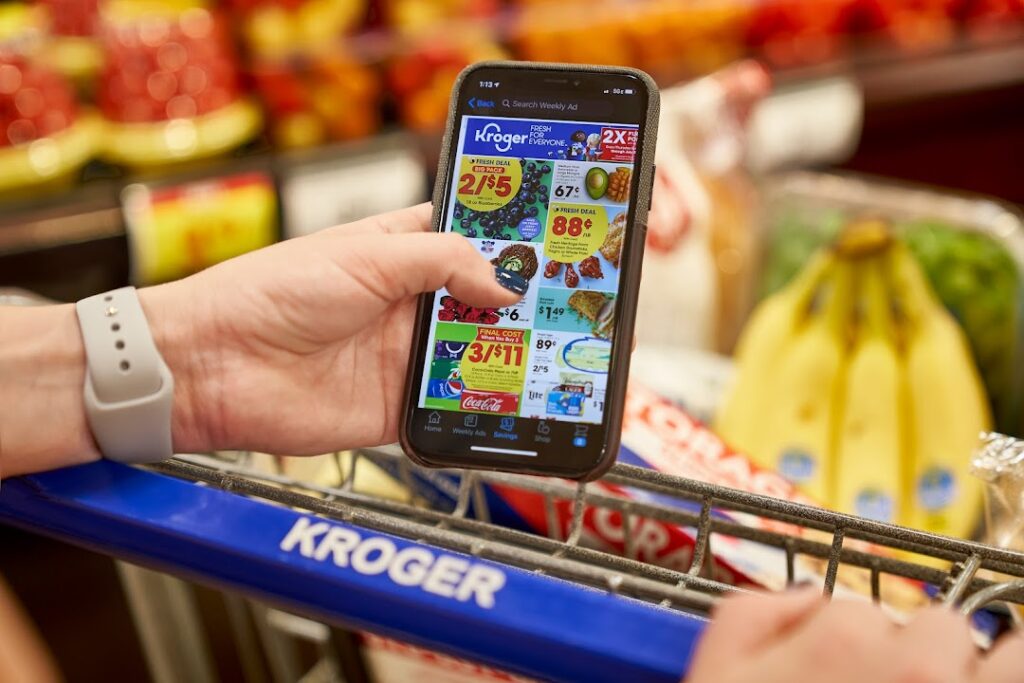Kroger : Reimagining and Restocking Groceries

Valuable shopper insights from its analytics arm enables Kroger to offer personalized shopping experiences resulting in substantial growth prospects
Background
Supermarket chain managers often spend a lot of their time deciding items and the quantities to be stocked on shelves. A lot of that also depends upon a variety of factors including in-person traffic, seasonal items, shelf-life expectancy, and customer behavior. With thousands of customers walking in and out of a grocery store, how do we identify each person’s needs? Are they cooking for just themselves? What are their preferences? How do we compete against online food shopping rivals? These are all valuable questions that a store manager or a leader should ask and which are the same questions Kroger leadership had as well. The solution to that – leverage rich customer data at all 2,700+ Kroger stores across the US and personalize experiences and curate offerings for customers.
“Data is the new battleground,” says Stuart Aitken, chief executive of 84.51˚, Kroger Co.’s data-analytics unit, whose name derives from the longitude of the division’s Cincinnati headquarters and because its 750 employees do so-called longitudinal studies, researching habits of customers over long periods [1].
Data at work
1. Kroger Precision Marketing (KPM): Combined with its best-in-class loyalty program and application of data analytics, Kroger collects more data on purchasing behavior of customers than any single retail outlet in the US. Kroger leverages this rich data to apply predictive machine learning models to segment shoppers and provide highly tailored personalized promotions and new product recommendations to its customers. KPM also uses data analytics to deliver relevant advertising by leveraging first party data, and combining it with customer profiles, to make localized advertising more effective through channels including its proprietary app, Pinterest, or Roku connected TV. [2]
Kroger’s precision level data is not only just useful for its stores around the US but also for the brands who are selling through Kroger stores. Through a collaborative cloud system, Kroger is making clean transactional data of around 60 million households, updated weekly, available to global brands. Companies such as Conagra and Kraft Heinz can leverage this data to run their models to better understand the purchasing behaviors of customers and make informed decisions on production and supply chain buffers.
The value created for customers and brands here is quite remarkable. Personalized shopping recommendations and promotions increases customer loyalty and delight. Kroger and the CPG brands, on the other hand, benefit from an increased basket size, customer loyalty and increased and accurate predictability of customer demand.

2. Operational Efficiency : Recent investments from Kroger includes infrared sensors across stores that monitor the number of customers in a store and use the data to automatically deploy clerks at checkout counters at peak hours. The data from this tool alone has reduced several minutes of wait times across stores [4].
Another innovation from Kroger labs is digital smart shelves using technology known as EDGE – which stands for Enhanced Display for Grocery. These shelves display product price and nutrition information based on the shopper’s individual preferences. With the cellphone app, customers can create a customized shopping list and when they arrive in store, the app will guide them along the fastest path to the location of the item on their list. As they approach the item, the shelf will display an icon signaling the item the customer is looking for thereby reducing the time it takes for a customer to complete shopping. The technology also makes it easier for employees to spot the item they are picking and reduces the time it takes to complete curbside delivery, and cutting this time by half.
Risks and Opportunities
Selling groceries is a low-margin business which means that big investments in technology can be a risky move especially when the customers do not really use the product or if the company is not able to leverage the data. Kroger, through various acquisitions such as 84.51˚ and incubating an R&D arm has fast tracked their way into leading the digital transformation in the grocery retail space. With more data and mature algorithms, Kroger can better predict customer behavior and forecast demand that can help them run a lean and dynamic supply chain which can be a competitive advantage. Kroger’s new digital ‘ecosystem’ enabled by highly personalized customer experience and combined with precision marketing and a mature curbside pick up footprint can give Kroger an advantage over the looming threat of Amazon in the near term.



Thanks for this fascinating post, Karthik! Super interesting to learn more about how Kroger is leveraging big data to optimize both the personalized shopping experience and the supply chain.
Regarding the former — I was actually working quite closely with the 84.51 team over the summer on innovation. In addition to believing that they can optimize demand for goods available in the store currently, they also believe their predictive analytics give them an edge in predicting what new products consumers will want in the near future… I think only time will tell just how good their predictive models are 🙂
Thank you for the super interesting post, Karthik! I was surprised to learn just how much Kroger has invested in its data analytics unit, especially given the low margins and highly competitive grocery store market. I wonder how much of this investment was purely reactionary to Amazon/Whole Foods and Walmart, since both offer curbside pickup and delivery options. I worry that both of these options might prove more attractive to customers given the low-cost delivery option, not to mention these grocery stores are implementing a similar personalized shopping experience for customers. I also wonder what % of Kroger’s customers have detailed registered Kroger profiles versus walk-in customers without a store-specific profile. If a large percentage of Kroger customers are unregistered, I’m not sure how Kroger could segment its customer base and intelligently inform its data engine.